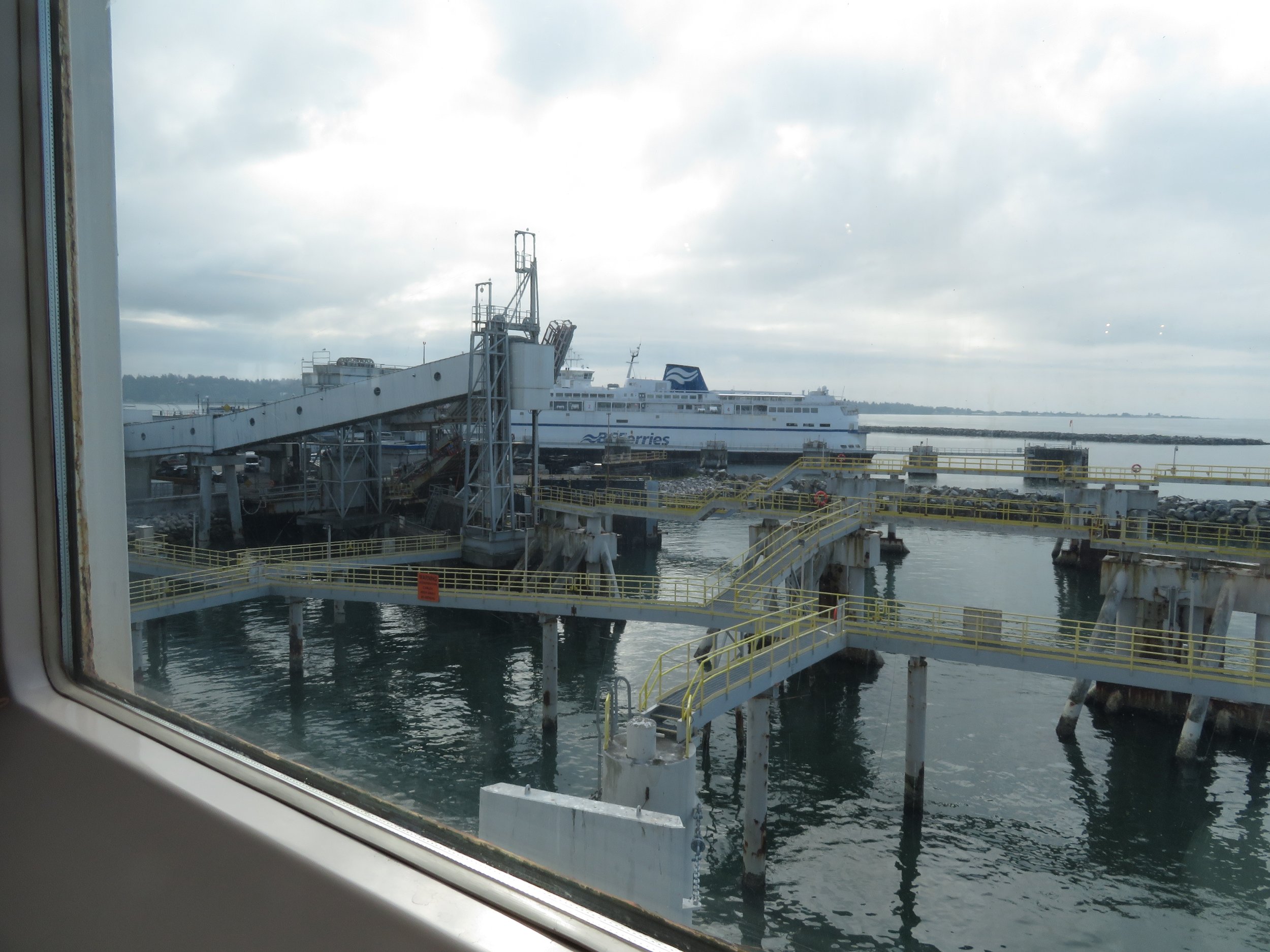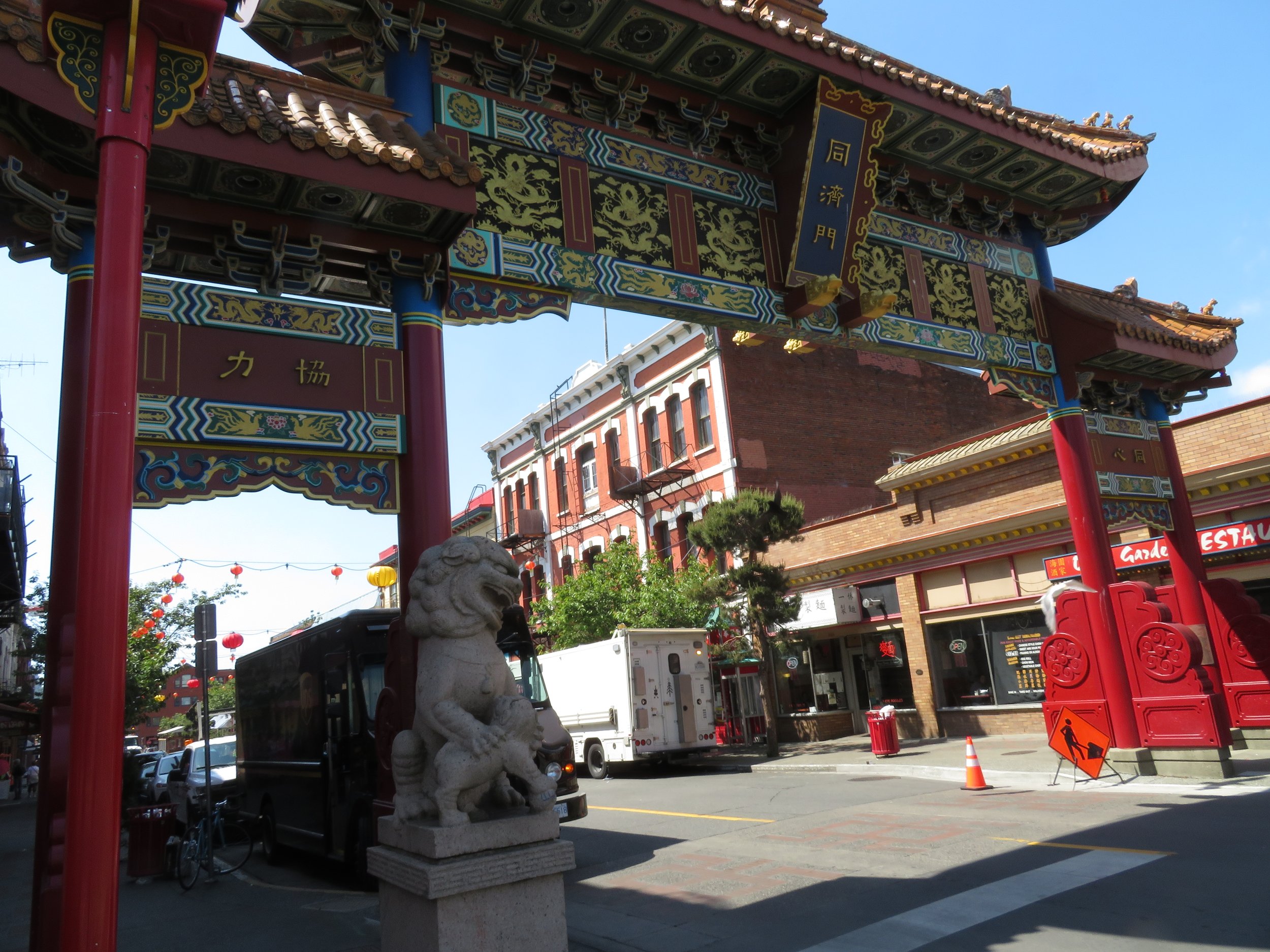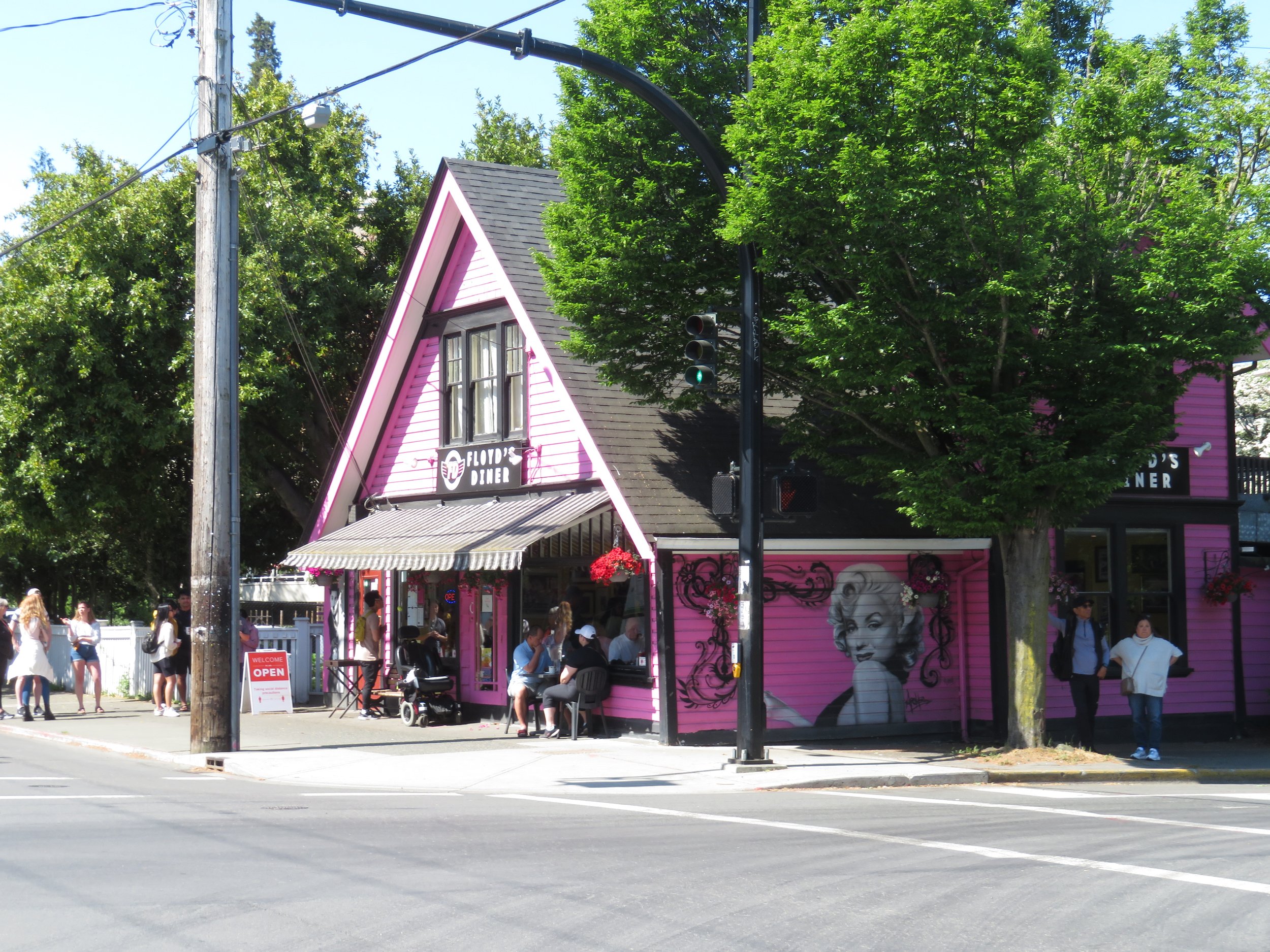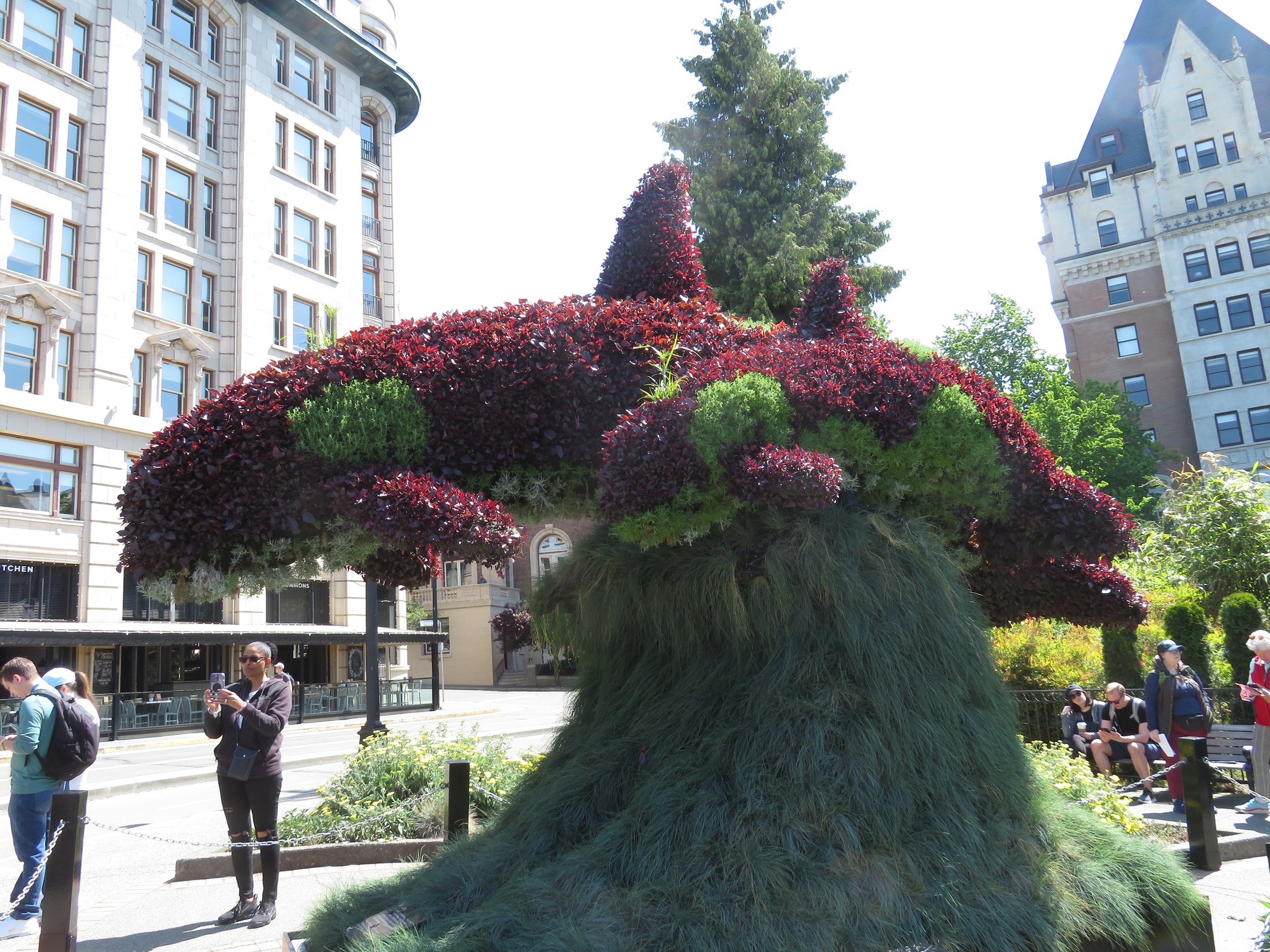Two Days in Vibrant Victoria
/A side trip we had planned while in the Vancouver area was a visit to Victoria, British Columbia’s vibrant capital city. The city is located on Vancouver Island and requires a ferry ride to get there.
Victoria was founded by the Hudson's Bay Company on March 14, 1843 as a trading post on land inhabited by the Coast Salish people. In 1849, the British claimed Vancouver Island as a Crown Colony. When gold was discovered in 1858 in the Cariboo Mountains, Victoria was the closest seaport and outfitting post and the town was overwhelmed by miners seeking their fortunes. The town grew from ~250 to over 25,000. Almost overnight, a sleepy trading post became a flourishing commercial center. Under British authority, the Crown Colonies of Vancouver and British Columbia were merged in 1866, British Columbia became the sixth province of the Dominion of Canada in 1871 and Victoria was named its capital.
Enough history…
We debated whether to take Blanche on the ferry or just park her and spend a couple of days exploring the city on foot or public transit. In the end, we decided to leave her in the BC Ferry’s short term parking area for $22/day. She was glad for the break, I think.
As walk-ons, we didn’t need reservations and just purchased our tickets for the 9AM ferry at the kiosk inside the ferry terminal ($18.50+tax/pp). Our ferry, “The Spirit of Vancouver Island” holds about 600 people and though the queue for boarding was long, it was quick, and there were plenty of good window seats available for the 1.5 hour passage.
The day was sunny and the seas calm. The passage across the Gulf of Georgia was pleasant and scenic as the ferry wended its way through the myriad of gulf islands on its way to the ferry terminal at Swartz Bay, Victoria.
Though the boarding seemed easy, we evidently picked up about a thousand people along the way because that’s how many seemed to be offloading at the Swartz Bay dock and every one of them was heading for the bus into the city. I’d done my homework on public transit. We were to pick up either Bus #70, #71 or #72 at the terminal bus stop and the fare was exact cash only, $2.50/pp or purchase a $5/pp all-day pass. Bus #70 was waiting at the stop when we exited the terminal, but the thousand people who rushed out before us filled the bus and the driver said ‘no more!’. Darn! Bus #71 pulled up shortly thereafter and we managed to squeeze our way aboard.
The bus took the scenic route into the city. The 20-mile ride to downtown Victoria took a little over than hour and dropped us off at the end of the line, a central location at Government & Superior, about three blocks from our hotel. For a change, we made reservations in advance at a moderately priced hotel, Helms Inn. From the outside it wasn’t very impressive, but our 2-room suite was lovely with a comfy king-size bed, a small lounge area and a kitchenette. The staff was helpful, knowledgeable and very friendly. We’d recommend it.
We arrived at the hotel close to Noon, too early to check in, but the hotel gladly stored our bags and recommended the Sticky Wicket Pub for lunch. On our walk to the pub, we also passed Thunderbird Park, part of the Royal BC Museum. The park’s display of First Nation totem poles and memorial poles was awesome. More on totem poles in a later blog… they fascinate me.
Lunch at the Sticky Wicket was good and once fortified, we set out to explore the town. First stop… the Visitor Center which overlooks the inner harbor and faces the Parliament buildings across the water.
The folks at the Visitor’s Center, though polite, were not very helpful. They felt compelled to direct us to a guided tour and could offer very little information on self-guided walks around the city or things to see on our own. Luckily maps.me and some previous research along with a city map gave us plenty of options of places to go and things to see.
Victoria’s Chinatown was top of the list and we headed there first. It was a several block walk along city streets to Chinatown and we passed through Market Square en route. Developed in the 19th century, Market Square was built primarily for sailors, merchants and gold miners. It was a hub for these ‘visitors’ with saloons, hotels, shops and other forms of entertainment. Today, it’s a shopping area with unique shops and boutiques, fun to stroll through and window shop.
Victoria is home to the oldest Chinatown in Canada and at one time, the biggest as well. It certainly doesn’t compare with New York or San Francisco, but we enjoy the Chinese architecture and vibrant colors and entered Victoria’s Chinatown via Fan Tan Alley, Canada’s narrowest street. If it hadn’t been for the sign and our little map, we would have never known it was there. Named for the Chinese gambling game, it was above this alley that gamblers gathered in the mid-1800s to play Fan Tan, eat, drink and partake in the opium dens. Opium, by the way, was legal in Canada until 1908, but gambling was not. My oh my, how times have changed.
The dark, narrow alley opened into a wider lane of bright colors, hanging Chinese lanterns and commercial shops.
The alley emptied onto Fisgard Street which appears to be the ‘Chinatown’ of today with Chinese shops, restaurants, fruit and veggie vendors, and curio shops lining the street. The area, for the most part however, has lost much of its old time ‘charm’ and ethnicity and succumbed to edgy retail shops. That said, what we consider ‘old time charm’ was probably not very charming at all and I’m sure the parts we didn’t see, still maintain much of the Chinatown we imagined.
We continued on to Dragon Alley… again a narrow passageway between buildings that originally housed the Chinese workers that lived and worked in Victoria. During the area’s boom years of 1881-1884, more than 16,000 Chinese established themselves in a six-block area creating a cultural enclave for the Chinese community which included their own shops and businesses, temples, a hospital, a school, an opium factory, brothels and gambling dens. A world of their own which became the first and largest in Canada.
We exited Chinatown through the 1981-built paifang, entitled ‘Gates of Harmonious Interest’.
We wandered up and down streets taking in some of the historic markers and headed down Government Street, toward the harbor once again. Several blocks of this street are designated as a pedestrian area and are lined with restaurants, pubs and upscale shops, especially for outdoor recreation like Eddie Bauer, Arcteryx, Hudson Bay Company and Fjällräven. We noted places we might like to check out later then made our way back to our hotel to check in, claim our luggage and our room and figure out a place for dinner.
The Steamship Grill in the old steamship terminal on the inner harbor had outside seating with heaters and even a blanket on each chair to keep diners warm in the cool evening air. Dinner was lovely and romantic, overlooking the busy harbor.
We arrived in daylight, but as the evening progressed (it was a long dinner), the views of the inner harbor from our table was glorious.
Walking back to the hotel hand-in-hand, the Government buildings were all outlined in white lights and magical to look at contrasted against the dark Victoria sky.
Despite being anxious to do more sightseeing, we were a bit lazy in the morning. The hotel checked our bag again and pointed us in the direction of Floyd’s for breakfast. What a gem of a place! Good breakfast, reasonable prices, great service and an entertaining menu.
We were on a quest today for public art and Floyd’s was close to the back side of the Parliament buildings where we found the Centennial Fountain. Designed by Robert Savery in 1962, the fountain commemorates the four colonies and territories that formed British Columbia.
The day was glorious and warm. Horse-drawn carriages clopped down the streets with tourists. We enjoyed the people-watching as much as our art quest.
Here’s a sample of the public art we found in our wanderings.
Bronze Emily Carr statue - renowned Canadian artist and writer born in Victoria, with a sketchbook in her hand, her Javanese monkey ‘Woo’ on her shoulder and her dog, ‘Billie’ by her side.
As a tribute to Victoria’s resident orca population is a seasonal topiary featuring a mother and her calf called The Surfacing.
The topiary, by the way, is on the grounds of The Fairmont Empress, ‘Canada’s Castle on the Coast’. Built in 1908 by the Canadian Pacific Railroad, the Chateauesque-styled building is considered one of Canada’s grand railway hotels.
‘Commerce Canoe’ employs a uniquely Canadian icon to evoke the history of exploration and commerce in the Canadian Northwest. It’s situated, unfortunately, right in the middle of a traffic circle and difficult to photograph.
Bastion Square in the heart of Victoria’s Old Town is now a pedestrian mall with shops, pubs and restaurants. Bastion Square’s ceremonial entry arch welcomes visitors to the original site of old Fort Victoria.
We came upon a Chinese man on a corner playing an erhu, a 2-stringed traditional Chinese instrument that sounds like a violin. We’d never heard or seen this instrument so we listened for awhile and chatted with him a bit to learn about his instrument
The day ended all too soon and though we’d only sampled a taste of Victoria, we loved it. We collected our gear and caught the bus back to the ferry terminal right outside our hotel. The ride back was calm, uneventful and a bit anti-climactic. In retrospect, we could have brought Blanche on the ferry and explored more of the city as well as Vancouver Island. We missed so much… the Gardens, the Royal BC Museum, the Castle, lunch at the Empress, the churches, all the cool little towns along the island’s coast… but we were getting antsy to move-on. A taste is better than not visiting at all.
Next time, Stanley Park in Vancouver and then the Sea to Sky Highway. Come along with us!





























